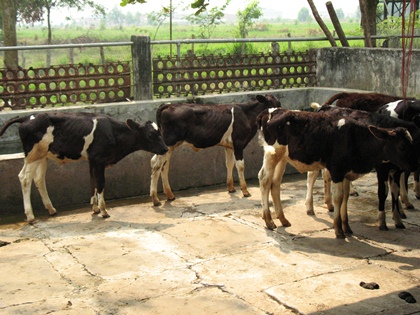
The area of perennial trees in the province is now
more than 173,000 hectares
Trees are growing and developing well and localities
have effectively implemented measures to prevent epidemics. Thanks to the
prevention of drought and flooding in trees, losses are minimized. The
application of scientific and technological advances in agricultural production
has been increasingly replicated in the locality, contributing to promoting
agricultural production.
As localities have been proactive in water sources
and well-prepared for cultivation soil, the area of winter-spring crop has
increased significantly, with the total area of winter-spring rice up by
1.87%, the area of crops up by 0.15%, and the area of summer-autumn rice down
by 3.57%.
The area of perennial trees in the province is now
more than 173,000 hectares, down 0.99% over the same period with the area of
fruit trees down by 1.65%, and the area of perennial industrial trees down by
0.68%. The area of perennial crops declines due to the fact that such crops as
cashew, pepper and rubber with low prices have been cut down and people have
switched over to other crops. Besides, some areas of perennial crops have been
changed to planning land for projects.
In the field of livestock, the development of
African swine fever has become complicated and spread quickly. On August 31,
2019, there were 3,595 affected households in 122 communes in 11 districts and
cities with the number of dead and culled pigs of about 328,060 heads.
Currently, the province is focusing on disseminating propaganda information on
how to prevent diseases on cattle and poultry, especially vaccination; directing
localities to concentrate on their management, inspection and supervision from
livestock farms to transport and business activities.

The total number of cattle herd is now more than 2.4
million heads
The total number of cattle herds in August - 2019
was more than 2.4 million heads, down by 4.69% over the same period. Regarding
poultry, due to stable domestic and export markets and the rising trend in the
coming time farms have actively increased their herds. The total flock of
poultry was over 25,000 heads, up by 5.84%. Compared to other livestock, chicken
farming has an economic advantage thanks to its short cycles, a high
herd-multiplying coefficient and the fact that a number of large companies have
assisted farmers to process and this leads to fast-growing poultry flocks.
Currently, some farms raising chicken for meat have connected consumption
businesses and formed a closed chain from farm to table to contribute to the
development of livestock activities.
The total fishery output in August, 2019 reached
more than 4,800 tons, up by 0.44% over the same period with a cumulative total
of more than 43,000 tons, up by 12.36% over the same period.
Also, the weather in August 2019 continued to rain
heavily, which is favorable for afforestation. In August 2019, the new planted
area was estimated to reach 712 hectares, up by 6.68% over the same period with
a cumulative total of 3,332 ha from early this year to now.
Regarding the target program of the new countryside
construction, the provincial People’s Committee issued a decision to recognize
that five communes have met the advanced new countryside standards including
Lang Minh commune in Xuan Loc district, Xuan Thien and Quang Trung communes in
Thong Nhat district, Tan Binh and Hieu Liem communes in Vinh Cuu district. Up to
now, 31 communes have met new countryside standards.
Regarding the tasks in the remaining months of 2019,
the provincial People’s Committee asked to focus on speeding up the
implementation of irrigation projects; check the development of communes after
five years of meeting new countryside standards; and finalize the proposal file
submitted to the central government to consider and recognize the province
completes the task of building a new countryside.
Duy Minh (N. Minh)